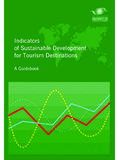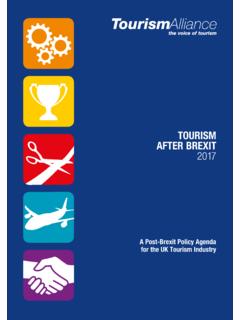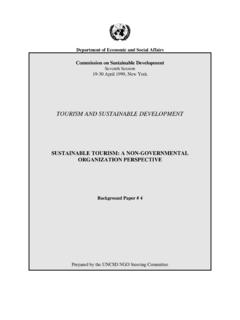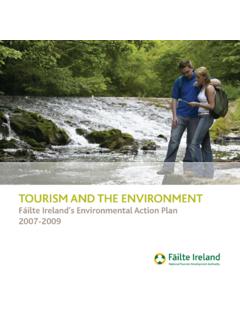Transcription of PROMOTING SUSTAINABLE AGRICULTURE AND RURAL …
1 UNESCO EOLSSSAMPLE CHAPTERSAREA STUDIES - EUROPE (Regional SUSTAINABLE development Review) - PROMOTING SUSTAINABLE AGRICULTURE and RURAL development - Bowler Encyclopedia of Life Support Systems (EOLSS) PROMOTING SUSTAINABLE AGRICULTURE AND RURAL development Bowler Department of Geography, University of Leicester, UK Keywords: RURAL systems, AGRICULTURE , RURAL development , regional economy, agricultural production, agricultural output, top-down development , bottom-up development , depopulation, intensification, exensification, integrated farming Contents 1. Introduction 2. The Meaning of SUSTAINABLE AGRICULTURE and RURAL development in Europe Regions in Europe SUSTAINABLE AGRICULTURE and RURAL development 3. Constraints on SUSTAINABLE development in RURAL Regions Restructuring of AGRICULTURE Socioeconomic Processes of Change 4.
2 Indicators of SUSTAINABLE AGRICULTURE and RURAL development 5. PROMOTING SUSTAINABLE AGRICULTURE and RURAL development SUSTAINABLE AGRICULTURE SUSTAINABLE RURAL development 6. The Effects of Policies PROMOTING SUSTAINABLE AGRICULTURE and RURAL development Effects development Effects 7. Conclusion Glossary Bibliography Biographical Sketch Summary SUSTAINABLE RURAL development can be contextualized to three types of region: periurban, productive agricultural lowland, and economic periphery. A range of indicators confirm the contemporary absence of SUSTAINABLE AGRICULTURE and RURAL development in Europe, although the constraints on SUSTAINABLE development vary among the three types of RURAL region. SUSTAINABLE RURAL development can no longer be equated solely with agricultural development in RURAL regions, and a new balance is being sought between farming and restructuring economies and societies.
3 A distinction can be drawn between top-down and bottom-up processes in the promotion of SUSTAINABLE development , with networks of institutions in RURAL regions playing an increasingly influential role. However, state policies to promote sustainability in RURAL regions are commonly overridden by other policy imperatives concerned with economic growth and global competition. 1. Introduction UNESCO EOLSSSAMPLE CHAPTERSAREA STUDIES - EUROPE (Regional SUSTAINABLE development Review) - PROMOTING SUSTAINABLE AGRICULTURE and RURAL development - Bowler Encyclopedia of Life Support Systems (EOLSS) Until the last three decades of the twentieth century, it was possible to equate RURAL development with agricultural development throughout much of Europe. On the one hand, even if direct employment in AGRICULTURE was declining, socioeconomic life in most RURAL regions still revolved around the positive multiplier effect of demand from the farm sector for both services, such as veterinary practices, agricultural advice, farm machinery supplies and maintenance, agrichemical supplies, shops, schools, and health facilities, and the marketing of farm products, including associated transport companies, abattoirs, food-processing factories, and auction markets.
4 On the other hand, land use and the management of the natural environment in RURAL regions were still dominated by AGRICULTURE , and development in the countryside remained an essentially farm-based issue. For example, in the 1980s, 80% of the surface area of the European Union (EU) remained in RURAL use, contained 25% of the population, but gave direct agricultural employment to only 6% of the workforce. However, the association of the RURAL , and its sustainability, with AGRICULTURE , has been severely weakened in a majority of European regions. First, as the logic of an industrial model of development has restructured AGRICULTURE in both Western and Eastern Europe, so the mainly urban population, with its emerging green consumerism, has been made aware of the associated financial costs of farm subsidies, the damaging environmental consequences of farming practices, the problematic health and safety characteristics of the food produced, and the relatively small contribution to employment and gross national (as opposed to regional) product that AGRICULTURE now makes.
5 Second, RURAL regions have come under increasing pressure to absorb new space and resource demands emanating from the growing urban population. The countryside is now increasingly sought as a place to live, to set up businesses (industrial and service), to provide tourist facilities, to generate water supplies, and to implement programs of habitat conservation. Thus, increasing numbers of RURAL regions in Europe are becoming more dependent on developments in their nonagricultural, as compared with agricultural, sectors regarding land use change, employment structure, and social composition of the population. Indeed it is now commonplace to regard RURAL regions as places of consumption as much as places of production. Consequently, the promotion of SUSTAINABLE development in RURAL regions throughout Europe must now incorporate nonagricultural and agricultural components, with the former concerned with communities that owe more to relations with urban areas than to their RURAL locations.
6 With the increasing urbanization of the countryside in Europe, the promotion of SUSTAINABLE RURAL development involves the repositioning of AGRICULTURE within regional economies and societies undergoing transformation. 2. The Meaning of SUSTAINABLE AGRICULTURE and RURAL development in Europe RURAL Regions in Europe The RURAL areas of Europe should not be looked upon as homogeneous. Rather, the European countryside comprises a rich mosaic of differentiated regions, which vary in their population characteristics, land use structures, economic dynamism, and service provision. For example, the proportion of the population living in RURAL areas within the EU varies from 48% in Ireland, to 30% in Spain, to 16% in Denmark. To generalize, UNESCO EOLSSSAMPLE CHAPTERSAREA STUDIES - EUROPE (Regional SUSTAINABLE development Review) - PROMOTING SUSTAINABLE AGRICULTURE and RURAL development - Bowler Encyclopedia of Life Support Systems (EOLSS) however, three broad categories of region can be identified, covering both Eastern and Western Europe.
7 First, within daily commuting range of all urban centers are RURAL regions heavily influenced by the processes of urbanization ( periurban areas made up of urban hinterlands). These processes include the transfer of RURAL land to urban uses ( , transport, housing, landfill sites, industry, retail and office space), the market opportunities offered to the farm sector ( , fresh farm produce, farm-based recreation, and direct farm sales), and the outspilling of the urban population to occupy the farmhouses, villages, and new housing located in the countryside. In Western Europe, such processes have been constrained by physical planning procedures with their roots in social democracy. In most Central and Eastern European Countries (CEECs), by contrast, the urbanization of the countryside has been regulated by centralized, socialist planning principles until the last decade of the twentieth century.
8 Second, beyond the daily commuting range of large cities lie productive, lowland farming regions, which, to varying degrees, are also receiving a new exurban population under a process termed counterurbanization. Such repopulation of the countryside is more evident in Western as compared with Eastern European RURAL regions, with many of the latter still suffering from depopulation as the transition to a capitalist economy continues. Three groups of exurban migrants can be identified: those following new nonagricultural employment opportunities into the countryside, the retired, and those seeking a RURAL idyll removed from the congestion, pollution, and crime levels of urban areas. The presence of these three groups changes the employment structure toward professional, managerial, and service categories, alters the social composition of the population toward the service class, and transforms social attitudes toward the environment and the interpretation of sustainability for RURAL communities.
9 A third group of regions comprises the economic periphery of national economies, characteristically the mountain and hill areas in both Eastern and Western Europe, but also including coastal margins, as in the west of Ireland, the Scandinavian countries, and Southern Europe. Many of these regions are influenced more by depopulation than repopulation and retain the greatest degree of rurality in association with land-based industries such as AGRICULTURE , fishing, forestry, and mineral extraction. Other peripheral regions, by contrast, are benefiting from the development of mass tourism and enjoy a buoyant economy and society, for instance the skiing valleys of the Alps and Pyrenees mountains and the coastal areas adjacent to the Mediterranean beaches of Europe.
10 The argument to be made here, therefore, is that SUSTAINABLE RURAL development in Europe has different meanings not just between the agricultural and nonagricultural sectors of economy and society, but also among the three different types of regions with their characteristics of socioeconomic growth or decline. However, limitations of space prevent a systematic development of this argument, and in the following discussion the three different types of RURAL regions have been considered together. SUSTAINABLE AGRICULTURE and RURAL development Both the purposive development of AGRICULTURE and RURAL economy and society have been pursued for many decades, but often separately rather than together. Indeed for a UNESCO EOLSSSAMPLE CHAPTERSAREA STUDIES - EUROPE (Regional SUSTAINABLE development Review) - PROMOTING SUSTAINABLE AGRICULTURE and RURAL development - Bowler Encyclopedia of Life Support Systems (EOLSS) long time RURAL development was conducted on a sector-by-sector basis.
















